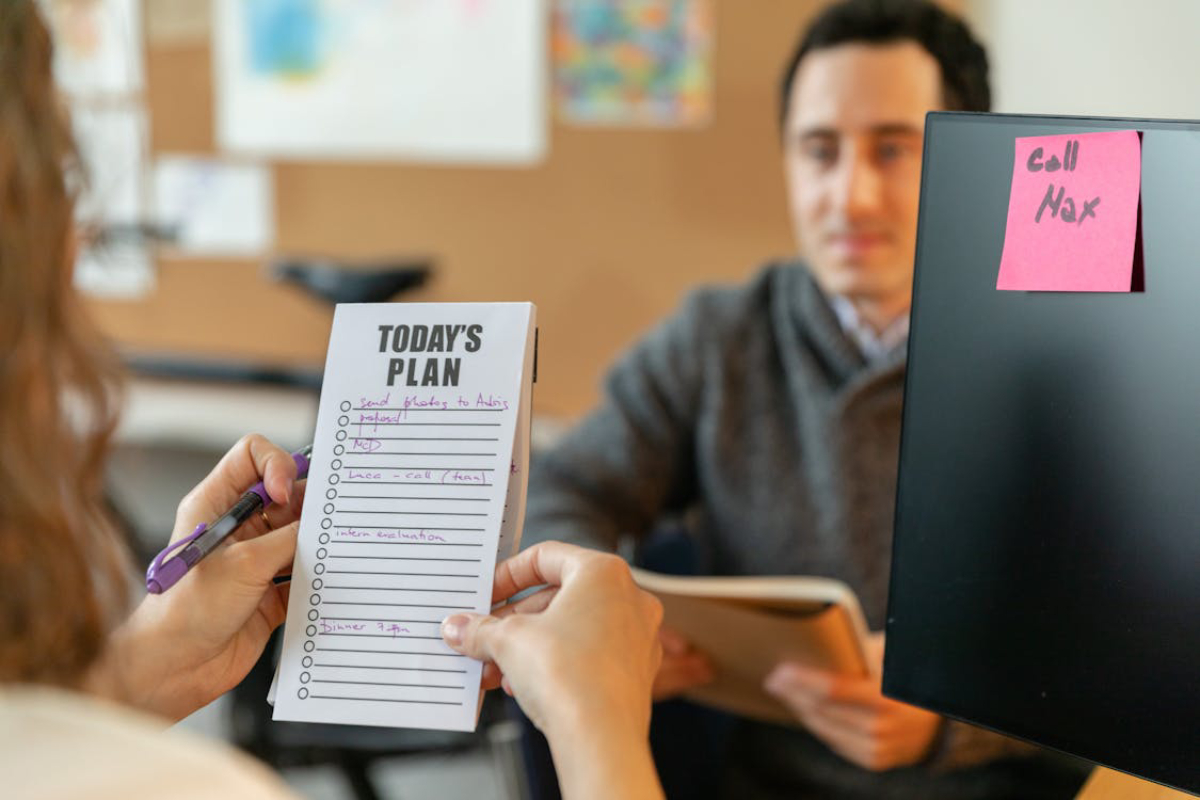The Personal Development Blog

How to Prioritize Tasks for Maximum Efficiency
How to Prioritise Tasks? In a world that never slows down, learning how to best prioritise our tasks to optimise efficiency, throughput, and productivity is a critical skill to learn for everyone involved. No matter if you’re working from home, maintaining personal obligations or a combination of both, knowing how to prioritise tasks can have a significant impact on your everyday life. This blog will discuss different task prioritisation techniques that are out there, some of the best productivity techniques, and how to manage the workload effectively.
Key Benefits: Why Task Prioritisation Matters
Task prioritisation is not just about making to-do lists; it’s about making strategic decisions that can lead to better outcomes. Here’s why it matters:
Improved Focus and Clarity
By prioritising tasks, you clarify what needs immediate attention and what can wait. This focus allows you to channel your energy into high-impact activities, reducing the noise of less critical tasks.
Enhanced Productivity
When tasks are prioritised, you can allocate your time and resources more effectively. This increases productivity as you spend less time on low-value tasks and more on those that drive results.
Reduced Stress and Overwhelm
Knowing what to tackle first can significantly reduce feelings of stress and overwhelm. With a clear plan, you can approach your workload confidently and calmly.
Better Time Management
Effective task prioritisation is a cornerstone of good time management. By identifying and focusing on key tasks, you can better use your time, leaving room for other important activities.
Real-Life Applications
Consider a project manager who needs to deliver a project on time. By prioritising tasks based on deadlines and importance, they can ensure that critical milestones are met, avoid last-minute scrambles, and ensure a smooth project flow.
Step-by-Step Guide: Task Prioritisation Methods

To effectively prioritise tasks, it’s essential to understand and apply various methods. Here’s a breakdown of some of the most effective techniques:
The Eisenhower Box
The Eisenhower Box, also known as the Urgent-Important Matrix, is a powerful tool for task prioritisation. It involves categorising tasks into four quadrants based on urgency and importance:
- Urgent and Important: Tasks that require immediate attention.
- Necessary but Not Urgent: Tasks that are essential but can be scheduled for later.
- Urgent but Not Important: Tasks that need quick action but don’t significantly impact long-term goals.
- Neither Urgent nor Important: Tasks that can be eliminated or delegated.
Using the Eisenhower Box, you can quickly identify which tasks to focus on and which to delegate or defer.
The ABCDE Method
The ABCDE Method is a simple yet effective task prioritisation technique. Here’s how it works:
- A: Tasks that are very important and must be done.
- B: Tasks that are important but not as critical as A tasks.
- C: Tasks that are nice to do but not necessary.
- D: Tasks that can be delegated to someone else.
- E: Tasks that can be eliminated.
This method helps you categorise tasks based on their importance and urgency, allowing you to focus on what truly matters.
The Ivy Lee Method
The Ivy Lee Method is a time-tested productivity technique that involves writing down the six most important tasks you need to accomplish in order of priority the next day. The key is to focus on one task at a time, moving to the next only after completing the current one. This method promotes deep focus and minimises distractions.
The Pareto Principle
The Pareto Principle, or the 80/20 rule, suggests that 80% of results come from 20% of efforts. You can maximise efficiency and productivity by identifying and focusing on the tasks that yield the most significant results.
Additional Expert Tips & Common Mistakes to Avoid
Best Practices for Task Prioritisation
- Review and Adjust Regularly: Task priorities can change based on new information or shifting goals. Regularly reviewing and adjusting your priorities ensures you remain aligned with your objectives.
- Set Clear Goals: Having clear, defined goals helps streamline task prioritisation. Knowing what you’re working towards makes it easier to identify which tasks are most important.
- Use Technology Wisely: Leverage productivity apps and tools to help manage and prioritise tasks. Tools like Trello, Asana, and Todoist can provide structure and reminders.
Common Mistakes and Misconceptions
- Overloading Your To-Do List: Avoid filling your to-do list with too many tasks. Focus on quality over quantity to maintain productivity.
- Neglecting Long-Term Goals: Don’t lose sight of long-term goals in the rush to complete urgent tasks. Balance immediate needs with future aspirations.
- Ignoring the Importance of Breaks: Continuous work without breaks can lead to burnout. Schedule regular breaks to recharge and maintain productivity.
Advanced Insights: Expert Recommendations

Unique Industry Perspectives
In the corporate world, task prioritisation is often linked to strategic planning. Companies prioritising tasks effectively can respond more agilely to market changes, outperforming competitors lacking this discipline.
Lesser-Known Insights
Research indicates that task prioritisation can improve mental health by reducing anxiety and promoting a sense of control. Individuals can create a more balanced and fulfilling life by managing tasks effectively.
Conclusion: Taking Control of Your Tasks
Task prioritization is a key skill that boosts productivity and efficiency. Using this blog’s methods, you can manage your workload better and reduce stress. Start small, try different techniques, and find what fits you best. As you improve your approach, you’ll see the great benefits of effective task prioritisation.
So, take the first step today and prioritise your tasks for maximum efficiency. What task will you prioritise first?









